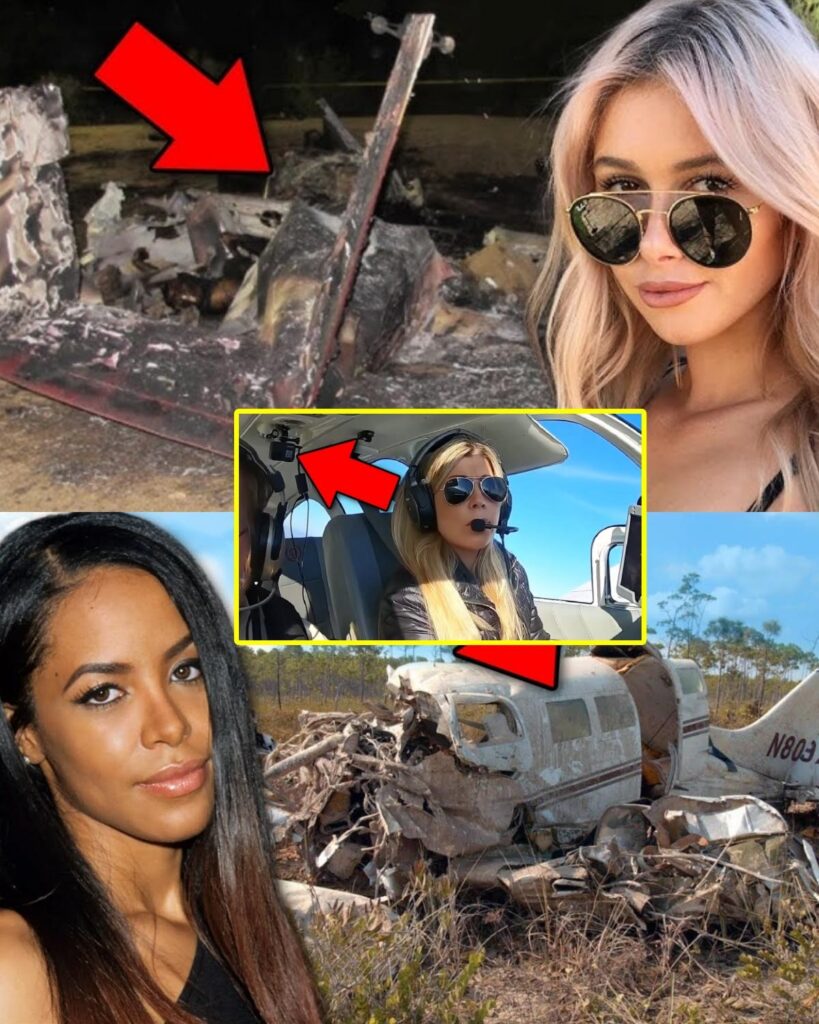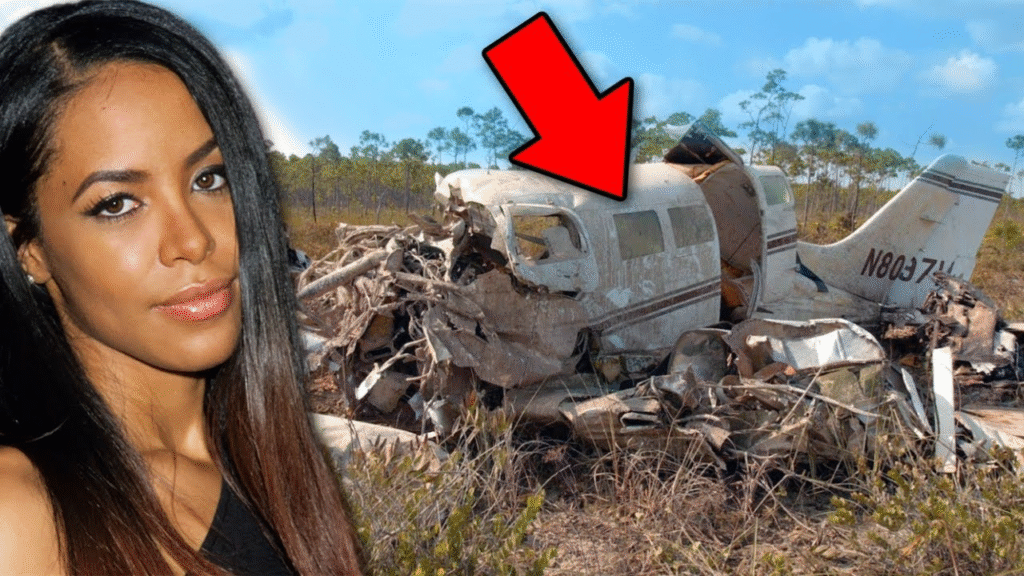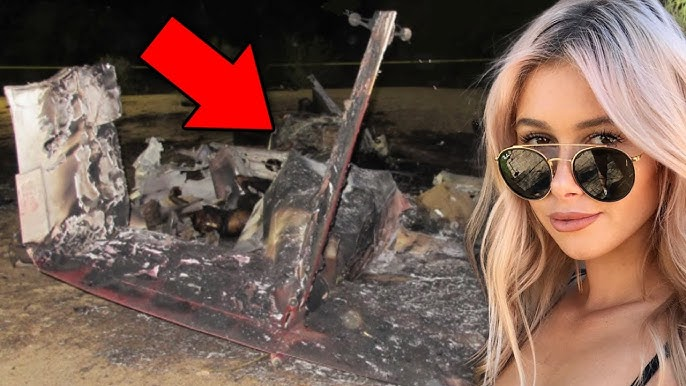
She was 22, unstoppable, the queen of urban pop with a brand-new album and a music video hot off a Bahamian beach. Minutes after boarding a small charter plane to Miami, Aaliyah and her team were dead. Witnesses say the aircraft clawed into the air, barely reached 40 feet, snapped left, and slammed into the marsh, erupting in fire. The headlines called it an accident. The truth is uglier, messier, and more chilling: this flight was illegal, the pilot should not have been at the controls, and the chain of lies that cleared that runway reads like a heist script.
What you’re about to read is the full, unvarnished breakdown: a pilot with cocaine in his system and an arrest record, a suspicious “checkride,” a plane stuffed with people and gear far beyond its limits, maintenance red flags, and a last-minute switch that almost certainly sealed their fate. Buckle up — because once you see what really happened, you’ll never look at a celebrity charter the same way again.
The runway to disaster: delays, pressure, and a deadly substitution
– The plan sounded routine: Aaliyah and seven team members would depart Marsh Harbour, Bahamas, late afternoon, bound for Miami.
– The aircraft that should have flown them, a larger Cessna 404 Titan, was ready and fueled — with a higher maximum takeoff weight that could have handled the people and luggage. Then, someone switched them to a smaller Cessna 402B with fewer seats and far tighter weight limits. Why? Cost? Convenience? We may never know. But that decision echoes through every second that followed.
– When the flight finally showed, Aaliyah — a nervous flyer — saw the tiny plane and balked. She wasn’t wrong. Eight people, heavy luggage, and a cramped cabin. Panic flickered. A headache, a pill to “help,” and she reportedly fell asleep. Witnesses say she was carried aboard. The clock started.

The pilot who never should’ve been there
– Meet 30-year-old Luis (Lewis) Morales: a pilot with a private license in 1999, commercial and multi in 2000, and roughly 350 total hours then. But by mid-2001, his logbook suddenly swelled by hundreds of hours in mere weeks — an impossible pace that raises a neon question: what was real?
– The rap sheet: arrested in November 2000 for stolen aviation parts; arrested again July 7, 2001, for cocaine possession and intent. Pilots have 60 days to self-report drug/alcohol convictions to the FAA; he hadn’t yet. Meanwhile, a supposed Part 135 checkride — required for commercial charter ops — appears to have been faked. Investigators later found the FAA examiner’s signature missing. Translation: the paperwork that put him in that left seat may have been smoke and mirrors.
– On the day of the crash, toxicology would reveal cocaine and alcohol in his system. A pilot, on a commercial charter, in a small plane packed to the ceiling. There are no “small” red flags in aviation. These were flares.

Illegal from the start
– Blackhawk International Airways held a Part 135 single-pilot certificate — meaning only the listed company pilot was legally authorized to fly paying passengers. Morales was not that pilot. The charter was therefore outside their approval, i.e., illegal.
– Worse, Blackhawk was not authorized by Bahamian authorities to conduct commercial operations there at the time. No clear flight plan. No verified ATC contact on the inbound ferry. It’s like the flight slipped through the cracks — because it did.
The airplane that begged to be grounded
– The 1976 Cessna 402B looked like transportation; it was a trap. Maintenance logs? Never produced. Investigators found both engine fuel filters contaminated with rust and debris. The left engine’s fuel control showed lint blockage. Not necessarily causal — but it screams neglect.
– On the ramp, witnesses saw the pilot prop the aft cabin door with a crate due to broken support cables. Engine starts reportedly backfiring and running rough. This is the moment when a professional cancels. This flight launched instead.
Overweight, out-of-balance — and out of chances
– Numbers don’t lie. The 402B’s max takeoff weight: 6,300 pounds. A proper calculation — which the pilot never performed — would have shown the aircraft at least 941 pounds over the limit. That’s not a rounding error. That’s a hard stop.
– Balance was worse. Two of the heaviest passengers reportedly took seats at the very back. The center of gravity was later estimated 4.4 inches aft of limits. In plain English: the plane’s nose would want to pitch up uncontrollably after liftoff. Combine that with overweight, warm air, a short runway feel, and you get the nightmare profile witnesses described: nose high, speed bleeding off, the wing stalls, the left roll starts, and gravity does the rest.
– Three people initially survived the impact. One — Aaliyah’s bodyguard — kept asking about her condition as he faded. The pain of this story doesn’t end at the wreckage.

The checklist that wasn’t used — and the smoking-gun settings
– Investigators found control trims in positions that make experienced pilots wince. Aileron trim hard right, rudder trim full left, elevator trim full nose down. Flaps? Set at 15 degrees, despite the checklist calling for flaps up for takeoff.
– These are the kind of errors checklists exist to prevent. They also match the profile of a pilot in a rush, distracted, or impaired. The airplane, already overweight and tail-heavy, lifted off into a perfect storm of bad configuration and bad physics.
The argument on the ramp — and the final push
– Witnesses say the pilot argued with the entourage: too many people, too much baggage. They pushed back: we paid, we need to go. Here’s the bitter truth of command: the pilot has the legal right — and duty — to say no. He didn’t. Whether fear of losing a job or appeasing a client, the runway doesn’t negotiate. It enforces.
The decision that could have saved nine lives
– Blackhawk’s larger Cessna 404 Titan was reportedly staged for the trip. Max takeoff weight: around 8,400 pounds. With that airplane, the numbers might have worked. Instead, a smaller, cheaper 402B rolled to the threshold. One phone call. One choice. Nine funerals.
Behind the curtain: how did this get booked?
– A third-party coordinator, Atlantic Flight Group, arranged the travel. On the outbound to the Bahamas, a different operator, Sky Limo, provided a larger aircraft. When plans shifted, Sky Limo could’ve flown them back — a plane was reportedly an hour away. They weren’t called. Blackhawk was. Why? Price? Availability? Convenience? In tragedies, the cheapest option is often the most expensive.
The moment of no return
– Throttle up. The overloaded twin accelerates. Tail heavy. Trim out of whack. Rotation comes early; the nose lunges skyward. Airspeed collapses. The left wing stalls first. The airplane snaps, rolls, and drops. At 40 feet, there is no room for mistakes — and no time for miracles. Impact. Fire. Silence.
The ugly postscript — and the lesson we keep ignoring
– Toxicology on the pilot: cocaine and alcohol. Maintenance shadows. Illegal charter authority. Faked or missing checkride sign-off. A last-minute airplane swap. A weight-and-balance that wasn’t done. A center of gravity beyond limits. A celebrity who sensed the danger and reportedly refused — before being sedated and carried aboard. Every link in this chain was breakable. None were broken.
– The NTSB’s core finding: loss of control after liftoff due to overweight, aft center of gravity, and operational failures. That’s the clinical language. The human translation is simpler: this flight never should have happened.
Remember the names
– Aaliyah Dana Haughton, 22 — artist, actor, icon in ascent.
– Eric Forman, Anthony Dodd, Scott Gallin, Christopher Maldonado, Douglas Kratz, Keith Wallace, Gina Smith — colleagues, friends, family to someone. Their lives mattered equally. They deserved a safe airplane, a legal operation, a pilot who said no.
Share this because the truth saves people
– If this shook you, share it. Safe to post on Facebook and Google. No ads, no paywalls — just the facts that might stop the next illegal charter, the next rushed departure, the next pilot who needs the courage to refuse the keys.
– The lesson is not subtle: legality, maintenance, weight-and-balance, sobriety, and training aren’t bureaucracy. They’re oxygen. The moment we treat them like paperwork, we start writing eulogies.